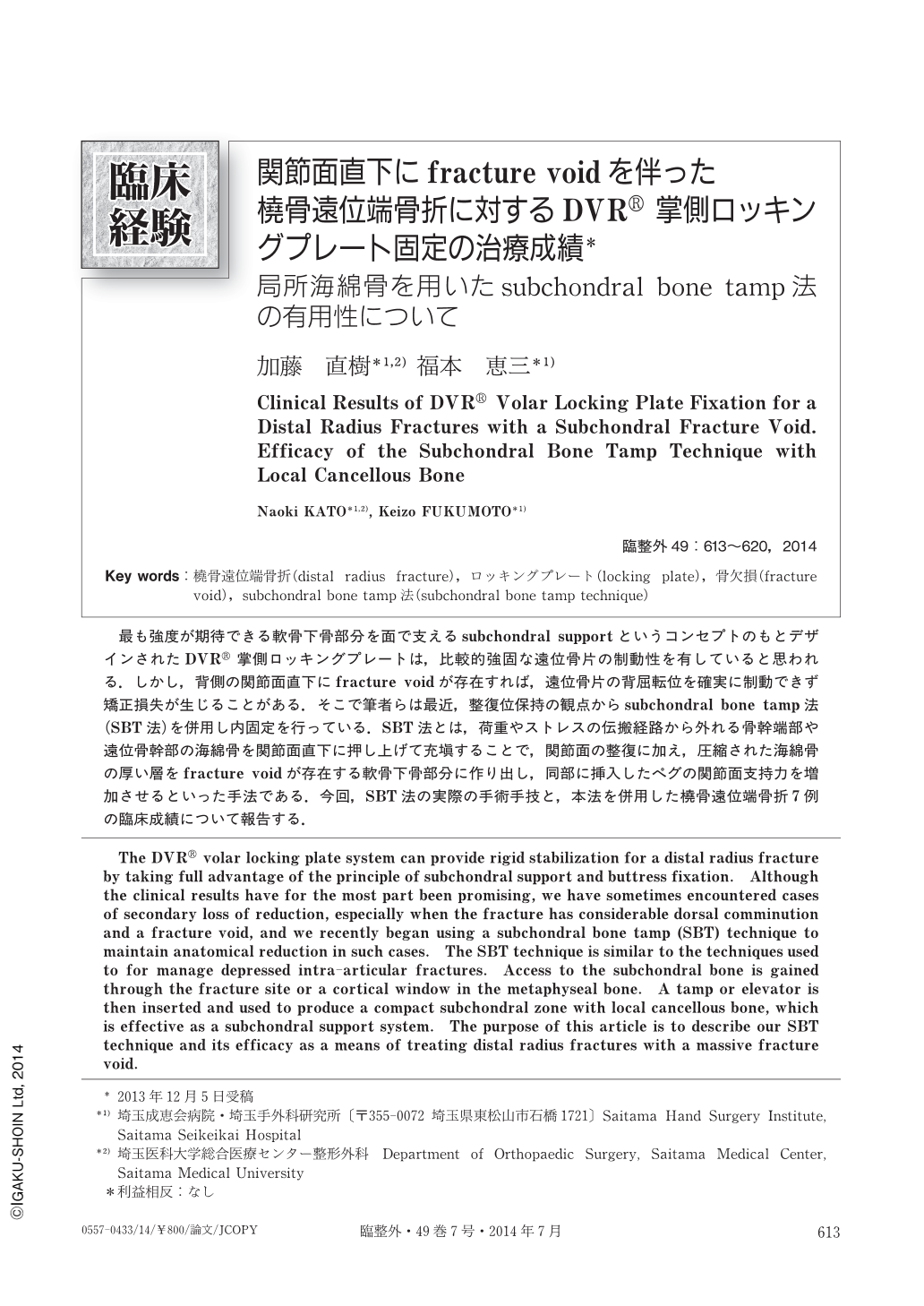Japanese
English
- 有料閲覧
- Abstract 文献概要
- 1ページ目 Look Inside
- 参考文献 Reference
最も強度が期待できる軟骨下骨部分を面で支えるsubchondral supportというコンセプトのもとデザインされたDVR®掌側ロッキングプレートは,比較的強固な遠位骨片の制動性を有していると思われる.しかし,背側の関節面直下にfracture voidが存在すれば,遠位骨片の背屈転位を確実に制動できず矯正損失が生じることがある.そこで筆者らは最近,整復位保持の観点からsubchondral bone tamp法(SBT法)を併用し内固定を行っている.SBT法とは,荷重やストレスの伝搬経路から外れる骨幹端部や遠位骨幹部の海綿骨を関節面直下に押し上げて充塡することで,関節面の整復に加え,圧縮された海綿骨の厚い層をfracture voidが存在する軟骨下骨部分に作り出し,同部に挿入したペグの関節面支持力を増加させるといった手法である.今回,SBT法の実際の手術手技と,本法を併用した橈骨遠位端骨折7例の臨床成績について報告する.
The DVR® volar locking plate system can provide rigid stabilization for a distal radius fracture by taking full advantage of the principle of subchondral support and buttress fixation. Although the clinical results have for the most part been promising, we have sometimes encountered cases of secondary loss of reduction, especially when the fracture has considerable dorsal comminution and a fracture void, and we recently began using a subchondral bone tamp (SBT) technique to maintain anatomical reduction in such cases. The SBT technique is similar to the techniques used to for manage depressed intra-articular fractures. Access to the subchondral bone is gained through the fracture site or a cortical window in the metaphyseal bone. A tamp or elevator is then inserted and used to produce a compact subchondral zone with local cancellous bone, which is effective as a subchondral support system. The purpose of this article is to describe our SBT technique and its efficacy as a means of treating distal radius fractures with a massive fracture void.

Copyright © 2014, Igaku-Shoin Ltd. All rights reserved.


